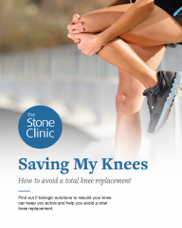Why Surgeons Don’t Repair Many Meniscus Tears
The meniscus is key to knee joint health. It provides shock absorption, stability, and fundamental protection against wear-and-tear arthritis. When torn, the knee joint often degrades. This has been known for decades, and during that time repair techniques have advanced tremendously. Still, few meniscus tears are repaired. Why?

- The surgery is difficult. As with any technique, the more you practice the easier it gets. Exposure of the meniscus in tight knees requires specialized techniques and patient positioning. Placement of the sutures needs to be precise. Older techniques required an experienced assistant. The techniques for solid repair require practice to be accurate and fast. Yes, it is difficult at first but becomes easy after a while.
- The surgery takes too long. Speed is increased with experience. Unfortunately, even at the most recent major international meeting in Boston, some top surgeons still advocated slow and outdated techniques—techniques that required open incisions at the sides and back of the knee joint. These extra incisions slow down and even intimidate some surgeons, leading them to resect rather than repair the torn meniscus. The extra incisions are not needed with advanced techniques. To protect the nerves, a combination of suture techniques that keeps all the needles inside the knee combined with techniques that pass from inside to outside can be deployed to avoid injuring the nerves and vessels that pass near the back and sides of the knee joint. Many new surgeons are unfamiliar with the open exposures and don’t have experienced surgical assistants needed to carry them out safely. Yet, they have not trained on the newer techniques.
- The tissues don’t heal. It was formerly taught that only a portion of the meniscus is supplied with blood. This led many surgeons to believe that tears in the inner part of the meniscus couldn’t heal. We now understand that a new blood supply can be initiated with needling techniques, fibrin clots, and marrow cells. Growth factors can be added to augment healing. Today, with good suture techniques, many tears can be repaired. Our guide is that if the tissue appears healthy, and a stable repair can be obtained, then healing can occur.
- The patients don’t want to be non-weight bearing. Since loading the meniscus actually helps with healing, most meniscus repairs can be treated with partial weight bearing. Only flexion and rotation should be avoided in the first post-operative month while the initial healing occurs.
- It costs too much. Meniscus sutures are no longer as costly as they were in the past. The extra surgical time they require is minimal when compared to resection of the meniscus. If a surgeon chooses to use multiple all-inside devices, then yes, it can become expensive. Often, the real issue is whether or not the patient’s insurance will cover the procedure. If these insurance companies had any understanding of the damage that the loss of the meniscus does over time, they might insist that repair is done first, with removal last resort if the repair fails. And you should insist, too.
Bonus data: If the patient loses their meniscus, there is now clear data showing that meniscus replacement with a donor meniscus protects the joint, returns the patient to pain-free sports, and in patients over the age of 50 delays artificial joint arthroplasty on an average of 8.8 years. Forty percent of the patients over 50 who received a meniscus allograft transplant never progressed to an artificial joint replacement.


